If mobile phones are part of the future of radio, the question is how radio can actively engage a smartphone-savvy young audience.
At Next Radio 2013, British radio futurologist James Cridland talked about how people use mobile phones to listen to radio. While radio consumption can be very different in various parts of the world, the overall steady growth of radio listening on mobile phones shows that we should think about how to turn a passive medium into an active experience for radio audiences of the next generation.
“It goes to show how different radio is consumed
in different countries”
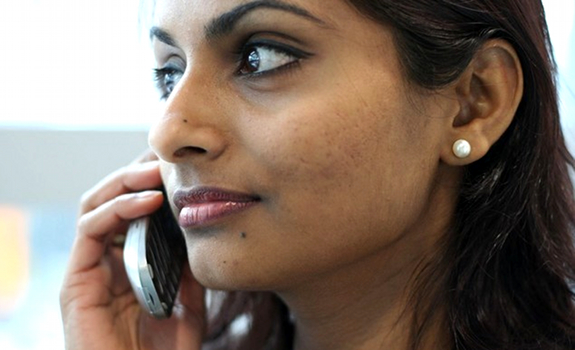
Radio listeners in India massively tune in through cell phone FM receivers and mobile apps (photo: Mareen Fischinger)
Develop mobile radio apps
Cridland, who writes and speaks about the integration of radio broadcasting and new platforms, has done research on how mobile phones are used for radio listening. The first conclusion: there’s indeed potential to extend on-air and online radio distribution through mobile apps. According to the 2010 Measurement of Internet Delivered Audio Services (MIDAS 7) of RAJAR, 53% of mobile listeners in the UK have used the FM receiver on their cell phone. From those people, 16% ran a branded app from a station; all others came from so-called aggregator apps.
 Research local listening habits
Research local listening habits
With 20+ million inhabitants, Mumbai is India’s largest city, and the fourth most populous metro in the world. Interesting: 94% of all radio listeners in Mumbai tune in through their mobile! Only 16% of the entire Mumbai radio audience listens with a traditional receiver, the RAM Baseline Study Universe Update 2011 of TAM Media Research calculates. “It goes to show how different radio is consumed in different countries in the world.”
Consider hybrid radio technology
No wonder that many mobile radio app developers have seen the light. Apart from being the title of James Cridland and Matt Deegan’s radio conference, Next Radio is the name of the smartphone app that puts FM radio back in your pocket, as the developer says on his site. Based on RadioDNS technology, the device is able to combine an FM signal with additional information over the Internet, such as song data and artist pictures. “It’s a great start for a hybrid radio future.”
“We’re not talking about huge figures just yet”
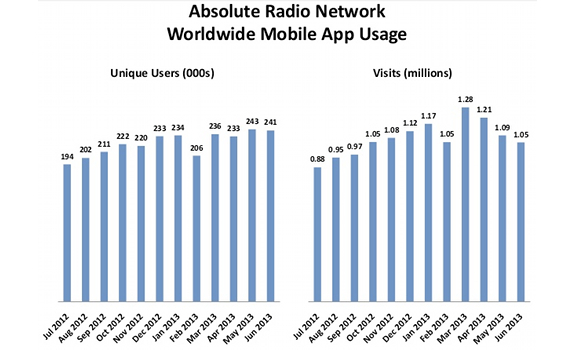
Approximately 1 listening session per user per week, like in this case of Absolute Radio – and a relatively short mobile time spent listening – makes radio listening through cell phones not really significant yet (image: One Golden Square)
Focus on iOS applications
Unlike many other radio stations, Absolute Radio is very open about their digital platform data. The June 2013 Engagement Metrics on their One Golden Square blog shows (an average of) 238.000 app installs across the Absolute Radio network during Q2 / 2013. Over half of those were for iOS operating systems – so at least for radio UK stations it might be smart to have a perfect iPhone app. Almost a third asked for the Android, and 1 out of 10 for the BlackBerry version. Microsoft and Nokia devices had a few percent.
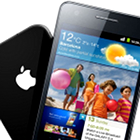 Go broad with Android
Go broad with Android
Cridland is noticing a similar user pattern in the US, where Android delivers a bigger audience, but Apple gets more time – twice as much as Android. “If you have an Apple phone, you are statistically more likely to be in an office where you’ve got free, abundant Wi-Fi and can actually sit at a desk.” Android offers both expensive and cheaper options, and is more likely to be used anywhere. So it might be good to offer an Android app as alternative.
Don’t expect too much
While UK radio listeners tune in for an average of 3 hours a day (RAJAR, Q4 / 2012), mobile’s share in this is small. “We’re not talking about huge figures in terms of tuning into radio through streaming mobiles just yet”, James Cridland says. One radio broadcaster he spoke with, mentioned an average of ‘12 minutes 46 seconds’ a day, while another operator indicated it’s ‘everywhere from 14-45 minutes across our apps over a typical week’ and that ‘the duration tends to correlate with the station format’. Absolute Radio, which is very open about its figures, reports a total of 241.000 unique users and 1.05 million app visits (June 2013 Engagement Metrics). That makes it realistic to count on 1 app session per user per week.
‘People seem to use apps
mainly to consume, and less to interact’
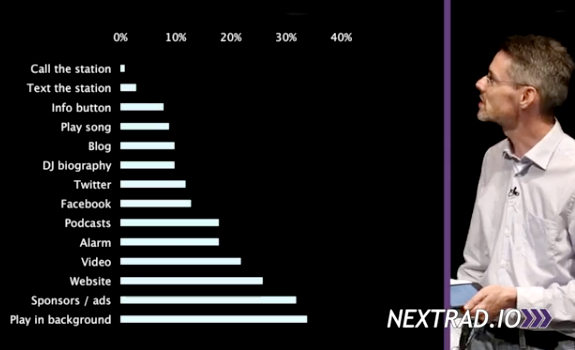
The above list, provided by an unidentified commercial station, indicates that cell phone listeners use mobile radio apps mainly to consume audiovisual content, and less to interact with the station (image and photo: Next Radio)
Design multitask-friendly user interfaces
How exactly are people listening to radio with apps on their smartphone? In the UK, Europe and Australia, 75% of mobile radio streams go over Wi-Fi networks; just 25% goes over mobile Internet. “People aren’t using mobile phones to listen to the radio while they are mobile; they’re more likely at home or in the office”, Cridland explains. It’s good to keep in mind that (mobile) listeners usually do something else while they’re ‘listening’. According to one of the broadcasters he spoke with, most app users instantly “hit the ‘play in background’ button so they get rid of the damn thing” and it looks like advertisements are doing “suspiciously well”. [By the way: based on the above graph, people seem to use apps mainly to consume, and less to interact – as social media are in the middle, and traditional media on the bottom of the list. But it looks like apps are a great gateway to a radio station’s website.]
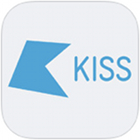 Use apps for branding
Use apps for branding
Do radio apps increase audience figures? James Cridland feels like they’re useful branding tools for diary-based markets. “If you have your station logo on your [mobile app] homepage, that is going to increase any brand recall.” But measuring at-work listening is more challenging in PPM markets. What’s Working at Work by Edison Research shows that about 25% of radio listeners at work are wearing headphones.
Promote downloads during weekends
Cridland considers mobile apps important for the future of radio. In every European country “apart from the crazy Dutch”, young people are tuning into radio a lot less than adults [see: New Generation Listeners Live in a Multi-Platform World]. The amount of people who listen to radio on a mobile phone is growing slowly but surely, especially among 15-24 year old people (data: RAJAR, 2010-2012). “People who find your station through places like Radioplayer, TuneIn and other ways, are the people you need to impress.” As mobile apps are mostly installed on Sundays, his advice is to promote radio apps on Fridays, Saturdays and Sundays, as it won’t be effective at the beginning of the week.
“I wonder whether linear radio
is the right experience for mobile”
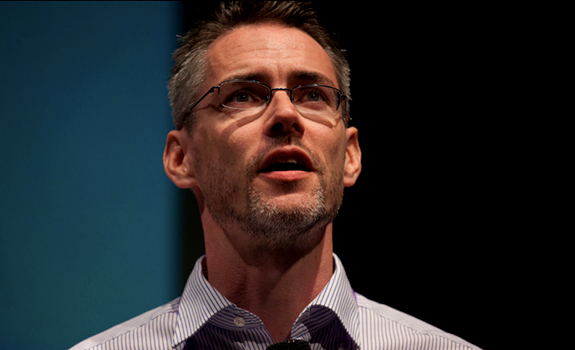
James Cridland feels like lean-back broadcast radio should be made more interesting for lean-forward mobile experiences, to actively engage mobile radio audiences of the next listener generation (photo: Next Radio)
Create ‘app-proofed’ radio content
The importance for radio to be present on digital platforms, such as mobile phones, is evident. On the other hand, it doesn’t quite fit the natural ‘plug & play’ aspect of radio. James Cridland signals that cell phones are lean-forward as “you’re always pressing buttons on it”. That’s the opposite of music radio; the least lean-forward medium. “The user interface for radio is great. You press one button and it plays you stuff, and when you’ve had enough you press another button and it stops. I wonder whether linear radio is the right experience for mobile, or whether we should deliver something better.”





Hi Andrew,
Thanks for your good comment.
In answer to your first question: James was asking whether audio content, which is now aimed at terrestrial radio listeners, is suitable for mobile phone users who tend to be in a more active/multitasking mode when using their cell phone.
I think you should let your mobile apps serve both passive and active radio listeners. Allow users to play the radio program in the background, while doing something else (on their phone) – after all, that’s how most people consume radio anyway. But extend the on-air content with links, pictures, video and audio (hosted on your website). Think of a short, on-demand version of the latest news bulletin or of a popular benchmark.
In reply to your second remark; focusing on a responsive mobile & tablet website before building apps: that’s an interesting thought. Some online marketing gurus claim the opposite and say that “the Internet is dead” and “apps are the new websites”.
My expectation is that the Internet will always be here – just like radio! – and I agree that you should make a great online portal the center of your community. All your brand assets – radio station(s), TV channel(s), mobile apps, social media, live events – then come together on your site. With the smartphone- & tablet-popularity worldwide, it’s indeed essential to have a responsive design.
In 2014 we’ll share some more thoughts about this, here at Radio))) ILOVEIT.
Happy New Year!
Thomas
Does James Cridland discuss the priority between creating a mobile/tablet responsive version of your website where these same core features such as streaming & song data, video, podcasts, etc. can be provided – and which is accessible by everyone easily as opposed to an app which has to be intentionally downloaded?
I believe NPR says: focus on a responsive mobile & tablet website before building apps.
Any thoughts?